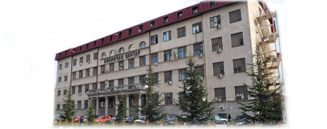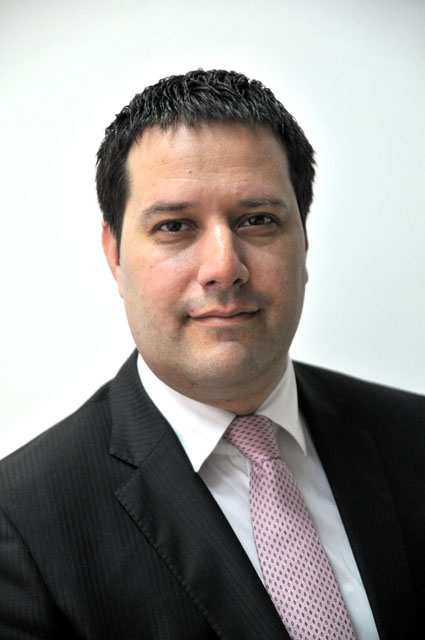Anesthesiology and Reanimation Center
- Created on Tuesday, 14 July 2015 10:04
Development of Anesthesiology in Niš
The development of the anesthesiology service was related to the year 1961, when Milorad Marković, MD, returned to Niš from Denmark and passed his final exam in the field of anesthesiology. The new organization of the hospital from 1971, which introduced separate clinics, demanded a greater number of educated anesthesiologists. The organization has remained the same up to the present day, though the field of anesthesia has gone through great transformations. The Anesthesiology and Reanimation Center of the Clinical Center Niš was formed on 12th February, 2009 as an organizational unit with 8 departments.
Anesthesiology and Reanimation Center in the Clinical Center Niš
The Anesthesiology and Reanimation Center is an organizational unit of the Clinical Center Niš, created by merging clinical department of anesthesia, based on the principles of modern anesthesiology and reanimation, with a view to ensuring the provision of anesthesia and reanimation in all clinics and centers of the Clinical Center Niš. Since 2015 the Anesthesiology and Reanimation Center has consisted of seven departments, a section and cabinet. The Center employs 144 healthcare providers, 61 medical doctors, specialists of anesthesiology and reanimation, 6 doctors specializing in anesthesiology and reanimation, 7 senior nurses - technicians anesthetists, 60 anesthetists and 10 nurses – technicians. The specialists of anesthesiology and reanimation and anesthetists perform wide scope of tasks of particular importance in the organization of preoperative, intraoperative, and postoperative treatment, as well as the tasks in the non-surgical clinics in terms of consultative work and implementation of the measures of cardiopulmonary reanimation. The Anesthesiology and Reanimation Center is a teaching base of the Medical Faculty of the University of Niš and performs various types of professional and scientific research. The Center participates in continuing medical education, implementation of scientific projects financed by the Ministry of Science and Technology of the Republic of Serbia, as well as the realization of their own and multicenter studies. The Center is managed by the director Radmilo Janković, MD, PhD, in cooperation with assistants, chiefs of departments, heads of sections and the head nurse.
Mission
The mission of the Center is organized, comprehensive, timely, professional, conscientious, rational, high-quality, safe, accessible, accountable, efficient, effective, sustainable and adequate provision of healthcare.
Vision
The vision of the Center is to provide operational priorities and activities with a view to achieving the necessary scientific and professional results with a focus on:* Providing safe, quality and continuous care for patients based on the unification of systematized multidisciplinary, specific and highly specialized knowledge and skills of anesthesiologists and anesthetists.* Improving the quality of service in anesthesiology and reanimation through the promotion of risk management, effective management, development of professional standards, protocols, guidelines, clinical pathways, clinical professional framework and providing continuing professional development of anesthesiologists and anesthetists through basic education and continuing medical education.* Respecting fundamental values, rights and beliefs of healthy and ill people..
- Department of Anesthesiology and Reanimation in General Surgery Clinic;
- Department of Anesthesiology and Reanimation in Cardiovascular Surgery Clinic;
- Department of Anesthesiology and Reanimation in Neurosurgery Clinic;
- Department of Anesthesiology and Reanimation in Orthopedics and Traumatology Clinic;
- Department of Anesthesiology and Reanimation in Urology Clinic;
- Department of Anesthesiology and Reanimation in Gynecology and Obstetrics Clinic;
- Department of Anesthesiology and Reanimation in Pediatric Surgery Clinic;
- Department of Anesthesiology and Reanimation in Otolaryngology Clinic;
- Department of Anesthesiology and Reanimation in Ophthalmology Clinic.
The activity of anesthesiologists and anesthetists is performed in the following non-surgical clinics in terms of consultative work, providing services of anesthesia for diagnostic methods and implementation of cardiopulmonary resuscitation:
- Emergency Center;
- Radiology Center;
- Hematology Clinic;
- Nephrology Clinic,
- Neurology Clinic;
- Infectious Diseases Clinic;
- Pediatric Internal Diseases Clinic;
- Cardiovascular Diseases Clinic;
- Center for minimally invasive surgery;
- Gastroenterology and Hepatology Clinic;
- Endocrinology, Diabetes and Metabolic Diseases Clinic
- Referral
- Laboratory analysis not older than one month: complete blood count, basic biochemical analysis, screening coagulation factors
- blood type - an official document
- ECG results not older than one month
- X-ray images of the heart and lungs not older than six months (not necessary for healthy children and young adults)
- medical documentation related to the surgery that is planned – surgeon’s report
- previous medical records
The anesthesiologist will also visit you at hospital the day before the surgery to check your condition and give you instructions before surgery. It is important not to take food and liquids the night before the surgery as at anesthesia induction the stomach should be empty. It is necessary to remove any excessive objects from the surface of your body, and any items that are not permanently fixed in the mouth, eye, etc. (denture, contact lenses, jewelry). It is necessary to remove the nail polish. Before entering the operating room you will receive premedication that will calm you down. After these injections you shall not get up from your bed. Upon the arrival in the operating room an anesthetist will insert an intravenous cannula, administer intravenous infusion and connected the device for monitoring your vital functions. Patient’s decision on the choice of anesthesia will be respected, if there is a choice, but the decision on the choice of anesthesia is the sole obligation of the anesthesiologist. Two basic types of anesthesia are: general and regional. In general anesthesia you are given drugs that induce a state of unconsciousness and loss of pain sensation - the patient is not aware of the surgery and other events around him/her. For regional anesthesia an anesthesiologist administers a local anesthetic near the nerves or nerve bundles and thus makes the part of the body insensitive. The patient can be awake during the surgery or can get medicines that will cause sedation. During the surgery the anesthesiologist is responsible for anesthesia and monitoring your vital functions such as heart rate, blood pressure, respiration, body temperature. After the completion of diagnostic, therapeutic or surgical procedures, the patient wakes up in the intensive care units or in the PACU. In both cases, it is under the watchful eye of the anesthesiology team. Sometimes, after the intervention the mechanical ventilation is required. In addition, because of the necessary monitoring of your vital functions you can be connected to numerous appliances that can cause discomfort. If you feel pain, consult your doctor or nurse. The point when the patient will be discharged from hospital primarily depends on the intervention conducted in anesthesia. With the new generation of inhaled and intravenous anesthetics, whose effects can be controlled or reversed in the short term, patients can be sent home a few hours after anesthesia. Upon the completion of the anesthesiology procedure you are allowed to leave hospital only with an escort. Do not actively participate in traffic, operate a motor vehicle or machines. With the healthy habits that exclude smoking or uncontrolled medication, and include moderation in diet, maintaining good physical fitness, regular annual check-ups and adherence to prescribed chronic therapy the patients significantly reduces the risks that may be encountered during diagnostic, therapeutic and surgical procedures in anesthesia. Nowadays, anesthesia is safe and the frequency of serious complications is very small, but sometimes, in spite of professionally guided anesthesia, it is not possible to avoid complications. During anesthesia and post-operative treatment the following complications are possible to happen:
- In general anesthesia: Nausea and vomiting, sore throat and muscle pain, decreased level of consciousness, difficult breathing, disorders of the heart and circulation, allergic reactions, tooth injuries, vocal cord injuries, presence of consciousness during surgery
- In regional anesthesia: tinnitus, visual disturbances, drowsiness, slow heartbeat, low blood pressure, longer numbness of the anesthetized areas, paralysis, pain at the injection site, bruising at the injection site, difficulty with urination, headaches, insufficient analgesia.
In its work, the anesthesiologist depends largely on the effectiveness of training and other members of the medical team, equipment in the institution and efficiency of the health system. All of the above and many other factors influence the effectiveness of the work of an anesthesiologist. It all has a certain risk that the patient must be informed about.






